| << Friends' Home Page | << Wildlife Page |
Harlequins?
--- Posting from our now closed Forum ---
No, not the chaps with the cabbage ears. Harlequin ladybirds. There are ladybirds everywhere today. Here in St George and apparently in Redland too. My spies have not reported from Cabot Circus yet. I wonder if they're Harlequins? I heard they might be.

Posted by Brambly, Sat Oct 10, 2009 7:21 pm
Just caught up with this post. This looks like 10-spot ladybird Adalia decempunctata. Several of our native species can look superficially like harlequins, so please don't squish unless you're sure...
Posted by DavidClementsEcology, Tue Dec 08, 2009 4:36 pm
I found two different harlequin ladybirds on Troopers Hill today, Harmonia Axyridis Spectabilis and Conspicua, also two different "normal" ladybirds a 7 spot and a 24 spot. There is a good identification chart on http://www.ladybird-survey.org/bbc/spotter.php and there is a very helpful specialist harlequin ladybird website http://www.harlequin-survey.org/recognition_and_distinction.htm.
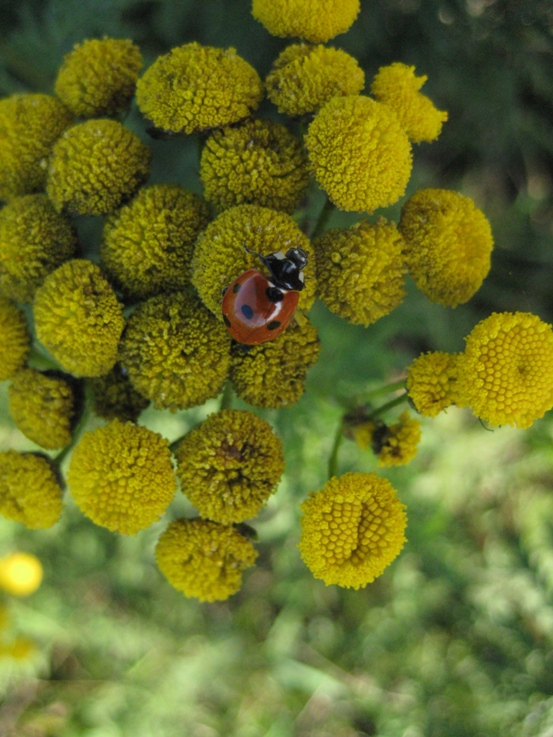
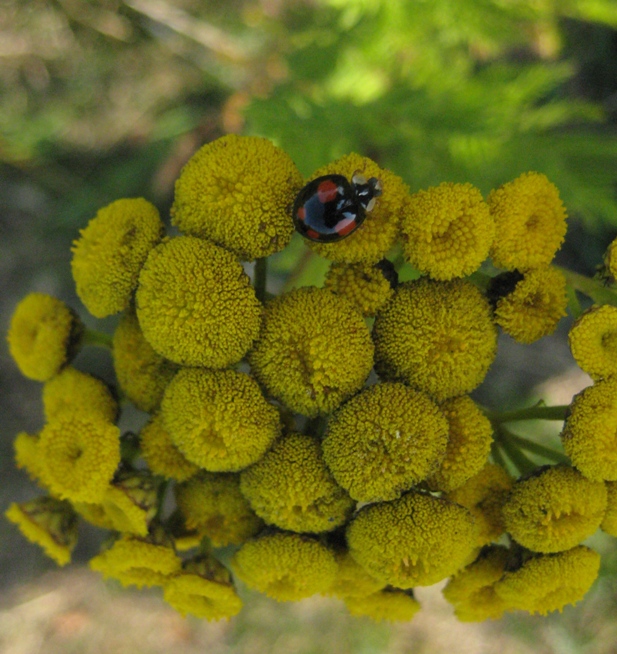
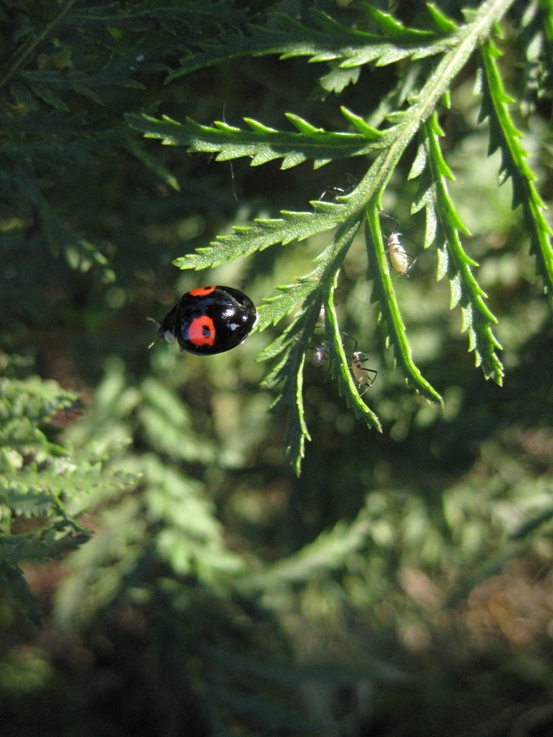
Posted by Susan, Sun Aug 15, 2010 11:15 pm
... and the 24 spot, as this forum only allows you to load up to 3 photos at a time.
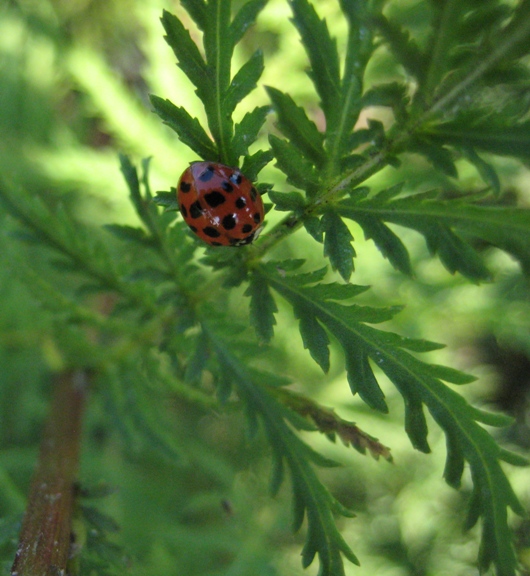
Posted by Susan, Sun Aug 15, 2010 11:17 pm
Harlequin ladybird and friends? - harmonia axyridis conspicua
suspect the aphids may agree to differ! :lol:
Did you find only one?
Posted by Jules, Mon Aug 16, 2010 4:39 pm
Yes, I only found 1 ladybird of each type, perhaps fortunately for the aphids. I only noticed them on loading the photo to my PC - maybe the title should have been harlequin ladybird and supper.
Tansy seems to be really good for attracting insects, particularly the patch just above the junction to the path to Sally's glade.
I had a first attempt at identifying some hoverflies yesterday. Lost heart a bit when I found from this description of a book on the subject that there are at least 190 species and for some of them you do need to get up very close and personal to identify what they are:
British Hoverflies an Illustrated Identification Guide. Stubbs, A.E. and Falk, S.J., 2002, 2nd edition revised and updated by Ball, S.G., Stubbs, A.E., McLean, I.F.G, Morris, R.K.A, Falk, S.J. and Hawkins, R.D., 469 pages. ISBN: 1-899935-05-3.
Published by the British Entomological and Natural History Society.
Illustrated keys, accounts of the species, 12 colour plates covering 190 species and 18 black and white plates depicting the genetalia of Cheilosia and Sphaerophoria and legs of male Platycheirus.
If you do become interested in hoverflies then a very useful website is http://www.hoverfly.org.uk. I was able to at least able to confirm that a hoverfly I saw on Troopers Hill Sunday was Scaeva Pyrastri. Apologies for the blurred photo.
I was also very pleased to find a pretty shieldbug which I am fairly certain, having compared it to the pictures on http://www.britishbugs.org.uk/heteroptera/Pentatomidae/dolycoris_baccarum.html is a sloe bug. Again having looked at the list of UK heteroptera (true bugs) I do not think this is going to be my specialist subject.
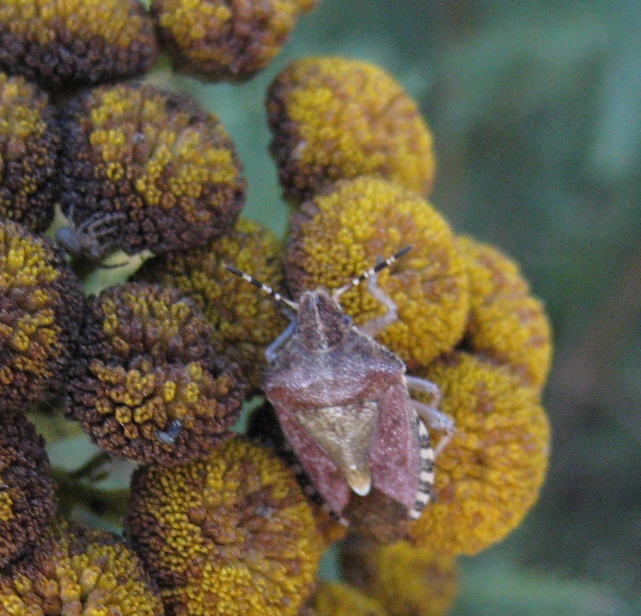
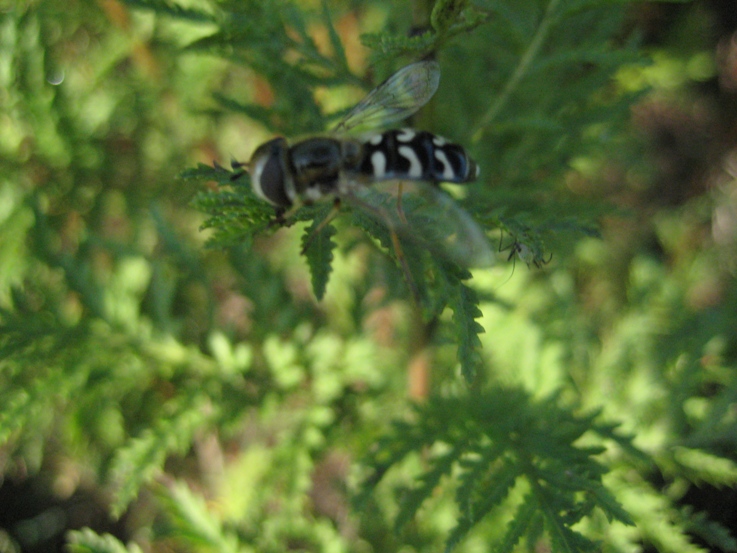
Posted by Susan, Tue Aug 17, 2010 10:47 am
Harlequin ladybirds - squash 'em or what?
That was an unanswered question in an earlier post in this thread. I found this response
"The answer is no (as in "no, don't squash" - Susan). It is not desirable to take any direct action, partly because it would make little difference to the harlequin population anyway but more importantly because harlequin ladybirds could be easily confused with other ladybird species which we wish to conserve. The Ladybird Survey and collaborators are exploring the interactions betweeen harlequin ladybirds and other species, to help understand the extent of negative (and positive) impacts of the harlequin ladybird on other species."
Posted by Susan, Wed Aug 18, 2010 8:27 pm
